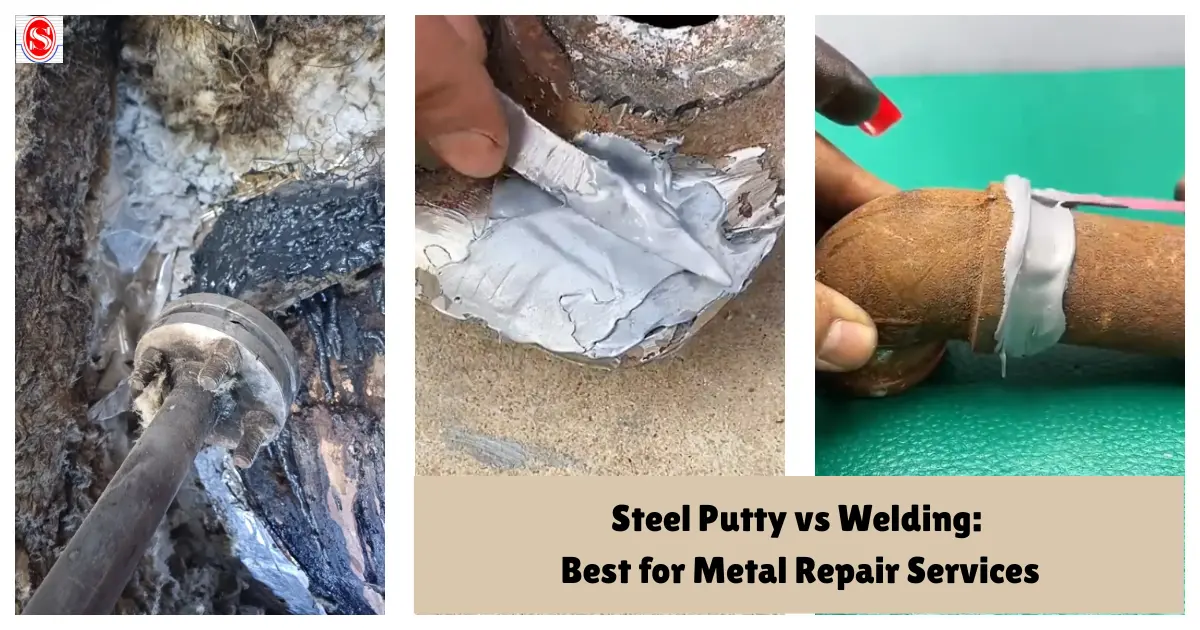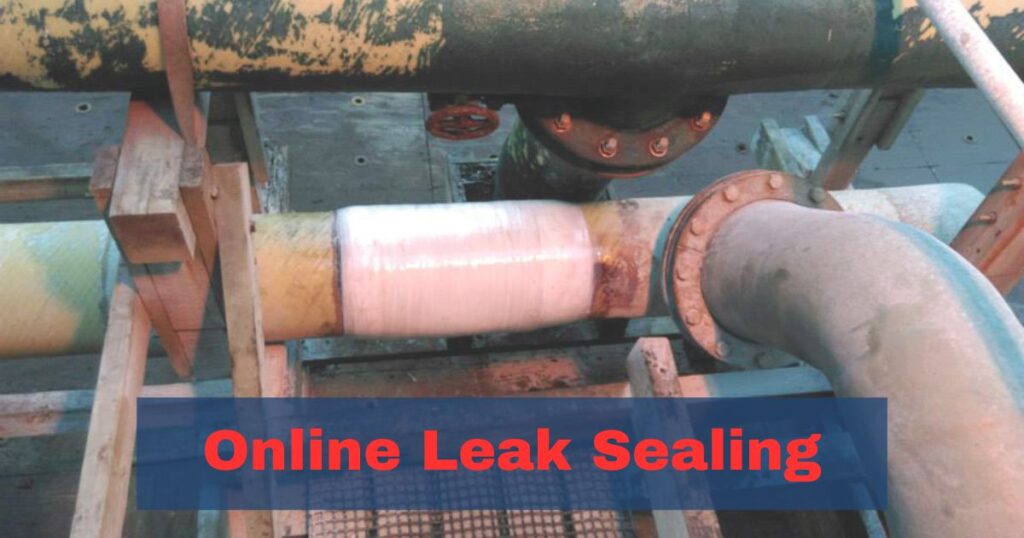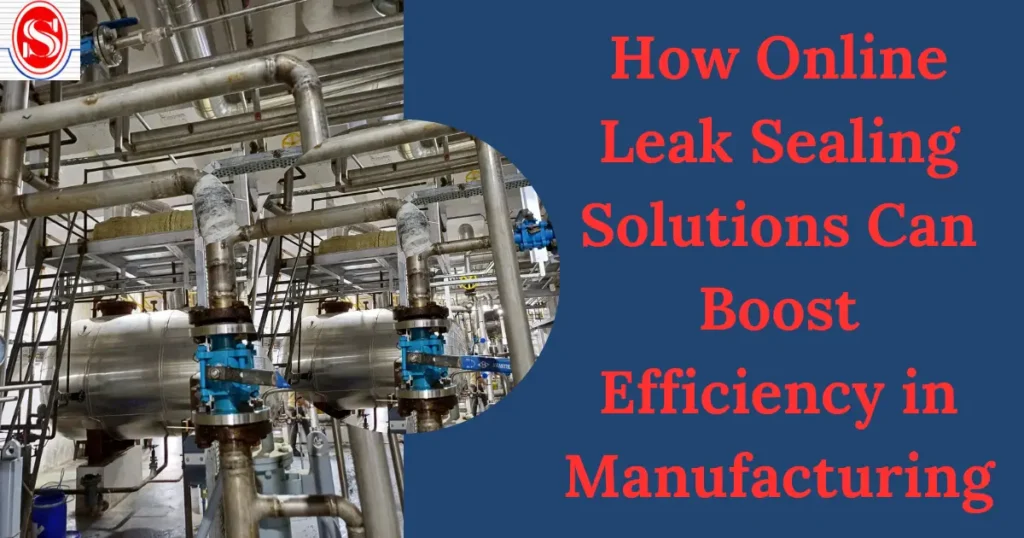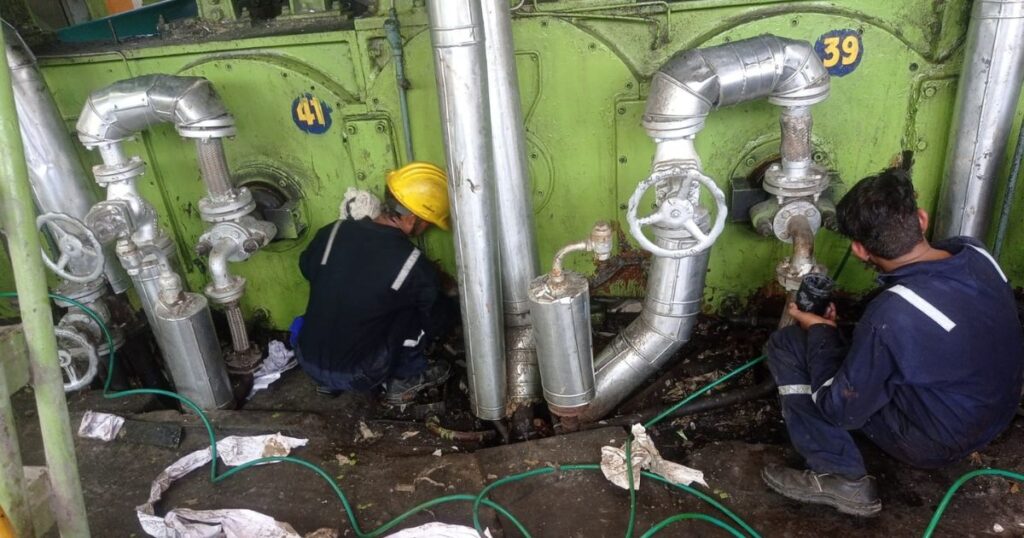
Introduction: Steel putty vs Traditional Welding
When metal parts break down or get damaged, especially in industrial plants or heavy machinery, there are usually two quick ways to fix them: welding or using steel putty. Welding has been the traditional method for years, while steel putty bond has emerged as a modern, effective solution. In this article, we’ll break down both methods, compare their advantages and drawbacks, and explain why Shree Ram Sealing Engineers’ steel putty is an ideal option for fast and reliable metal repairs.
Welding is a process that joins metal parts by melting them together using intense heat. It creates a strong, durable bond and is widely used in industries ranging from construction to automotive manufacturing.
Advantages of Welding:
- Strong Joints: Welding forms a permanent, metallurgical bond that can match or exceed the strength of the original metal.
- Heat Endurance: Welded joints handle high temperatures very well, making them suitable for heat-exposed machinery.
- Durability: When done correctly, welded repairs can last for years without issues.
Limitations of Welding:
- Requires Skilled Labor: Not everyone can weld. It takes training, certification, and hands-on experience. This can slow down repairs, especially during emergencies.
- Expensive Equipment and Safety Hazards: Welding machines, protective gear, and fumes all require serious investment and strict safety measures.
- Heat Damage: Thin metals or delicate components can warp or weaken from high heat during welding.
- Limited Use Cases: Welding isn’t suitable for all types of materials or surfaces, especially dissimilar metals.
Steel epoxy putty, often referred to as metal repair epoxy, is a two-part compound consisting of a resin and hardener. When mixed, it forms a paste-like material that hardens into a strong, metal-like substance. It’s especially helpful in emergencies, remote locations, or situations where welding isn't practical.
Benefits of Using Steel Putty:
- Easy to Apply: No special skills or machines are needed. Anyone can apply steel putty with just basic instructions.
- Fast Setting: Once applied, the putty hardens quickly—usually within minutes or a few hours—minimizing downtime.
- Versatile Applications: It bonds well with various surfaces, including different metals, plastics, and even concrete.
- No Heat Required: Since there's no need for heat, there's zero risk of damaging heat-sensitive components.
- Corrosion Resistance: High-quality products like Shree Ram Sealing Engineers’ steel epoxy putty are formulated to resist water, oils, chemicals, and rust.
- Cost-Effective: Lower labor costs, no need for expensive tools, and quick results make this a budget-friendly repair option.
Limitations of Steel Putty:
- Surface Prep is Essential: The surface must be cleaned and sometimes roughened for the putty to stick properly.
- Not for Extremely Heavy Loads: While very strong, steel putty can’t always replace welding for high-load or impact-prone areas.
- Temperature Limits: Though heat-resistant to a degree, steel putty may degrade under extreme and prolonged high temperatures.
Why Choose Shree Ram Sealing Engineers’ Steel Putty?
When it comes to quality and performance, Shree Ram Sealing Engineers has developed a range of steel epoxy putty products that outperform many generic alternatives. These solutions are trusted by professionals in power plants, factories, refineries, and repair shops across India and beyond.
Key Features:
- High Bond Strength: Shree Ram’s steel putty offers impressive adhesion on metal surfaces, ensuring strong, lasting repairs.
- Industrial-Grade Durability: Designed for heavy-duty use, these putties perform well under pressure, vibration, and exposure to harsh chemicals.
- User-Friendly Packaging: Each product comes with clear instructions and easy-to-use formats, even for first-time users.
- Customized Formulas: From multipurpose epoxy putties to specialized metal and pipe repair kits, Shree Ram provides solutions for nearly every repair scenario.
One of the top-selling products is Shree Ram Sealing Engineers’ epoxy, a heavy-duty steel epoxy putty made specifically for metal repairs. It can fill cracks, easy To Use steel-reinforced, hand-mixable epoxy putty, rebuild worn parts, seal leaks, and restore surfaces that have corroded or degraded over time. Whether you need to repair a pipe in a sugar factory or fix a valve in a chemical plant, Plastic A is engineered to deliver results that last.
Real-World Examples – When Steel Putty is the Better Option
1. Machinery Repairs in Factories
In high-speed production environments, machinery can’t afford long downtimes. Steel putty allows for quick, on-the-spot fixes without dismantling the entire system or bringing in a welder.
2. Pipe and Tank Repairs
Cracks and holes in pipes or tanks can be sealed fast using Shree Ram’s epoxy putty kits—ideal for handling leaks in pressurized or corrosive environments.
3. Protective Coating Against Corrosion
Apply steel putty as a protective layer on exposed metal parts. This shields them from moisture, chemicals, and rust—significantly extending service life.
4. Emergency Breakdowns
During sudden breakdowns, like a leaking steam line or broken bracket, steel putty offers a fast fix, buying time until a permanent solution can be implemented.
Both welding and steel putty have their place in metal repair work. Welding is strong and permanent but demands skilled labor and expensive equipment. Steel putty, especially products from Shree Ram Sealing Engineers, provides a quicker, safer, and more affordable alternative—particularly for emergency or on-site repairs.



